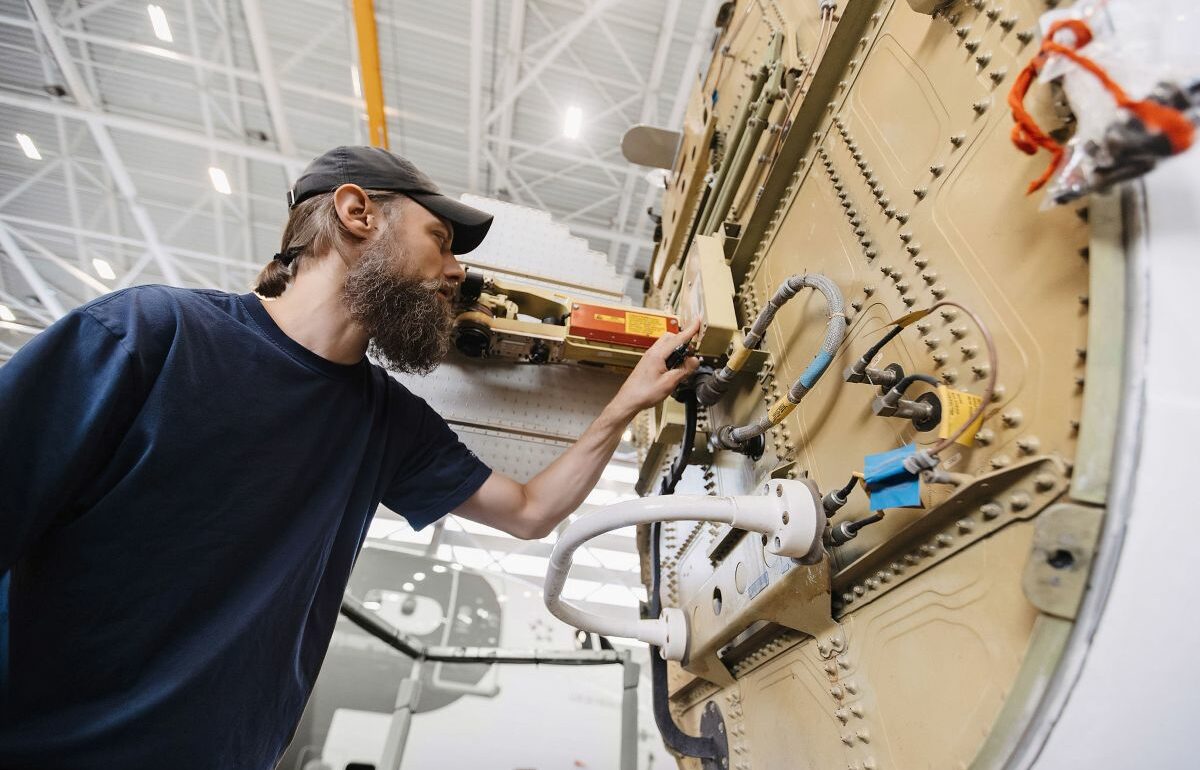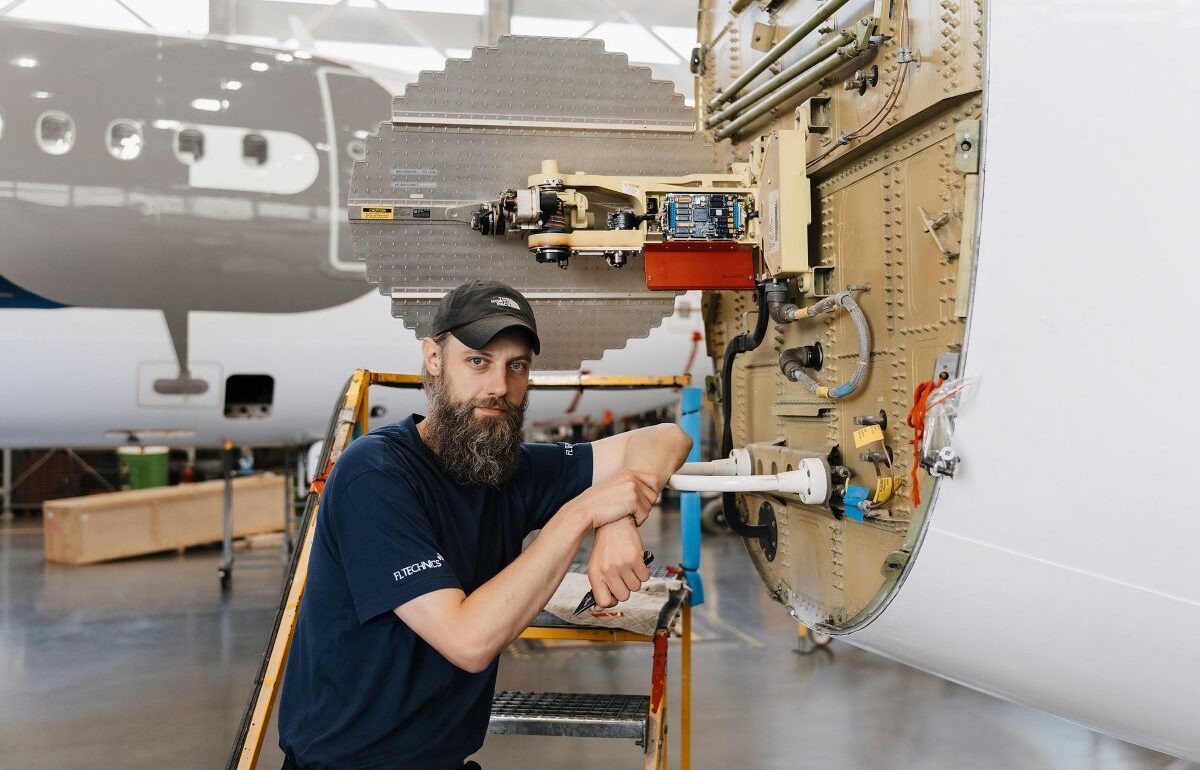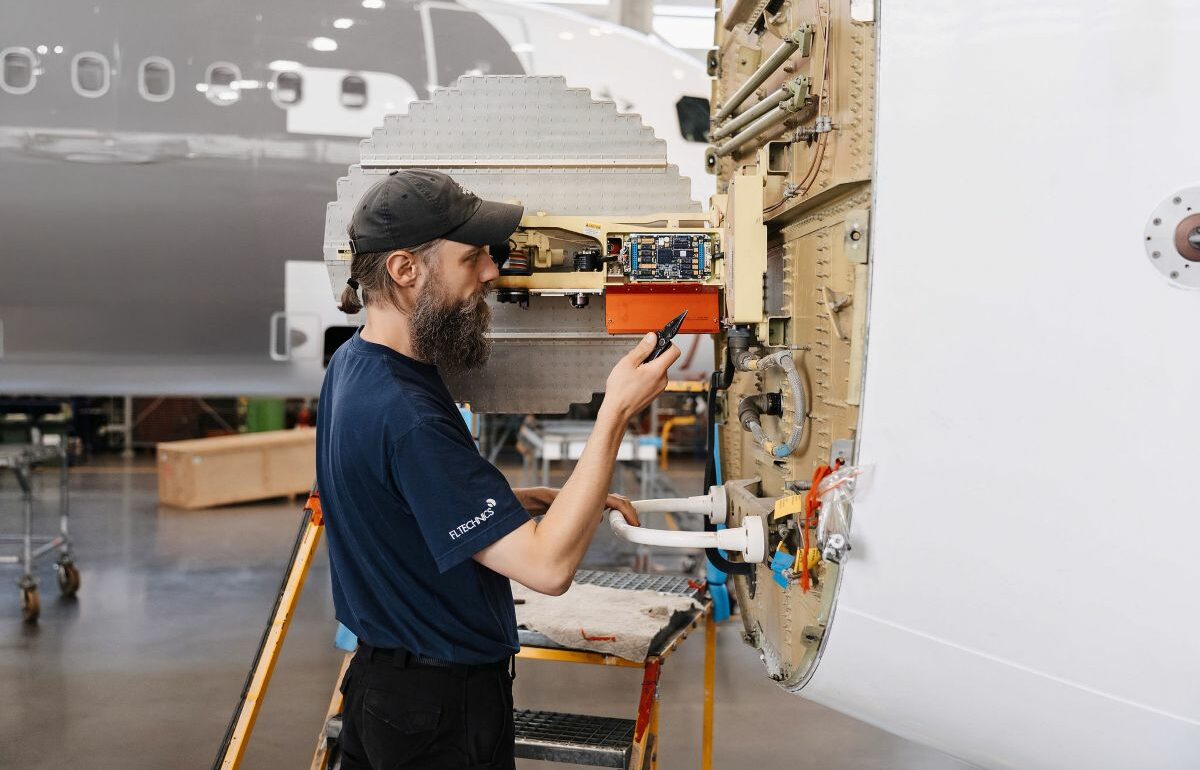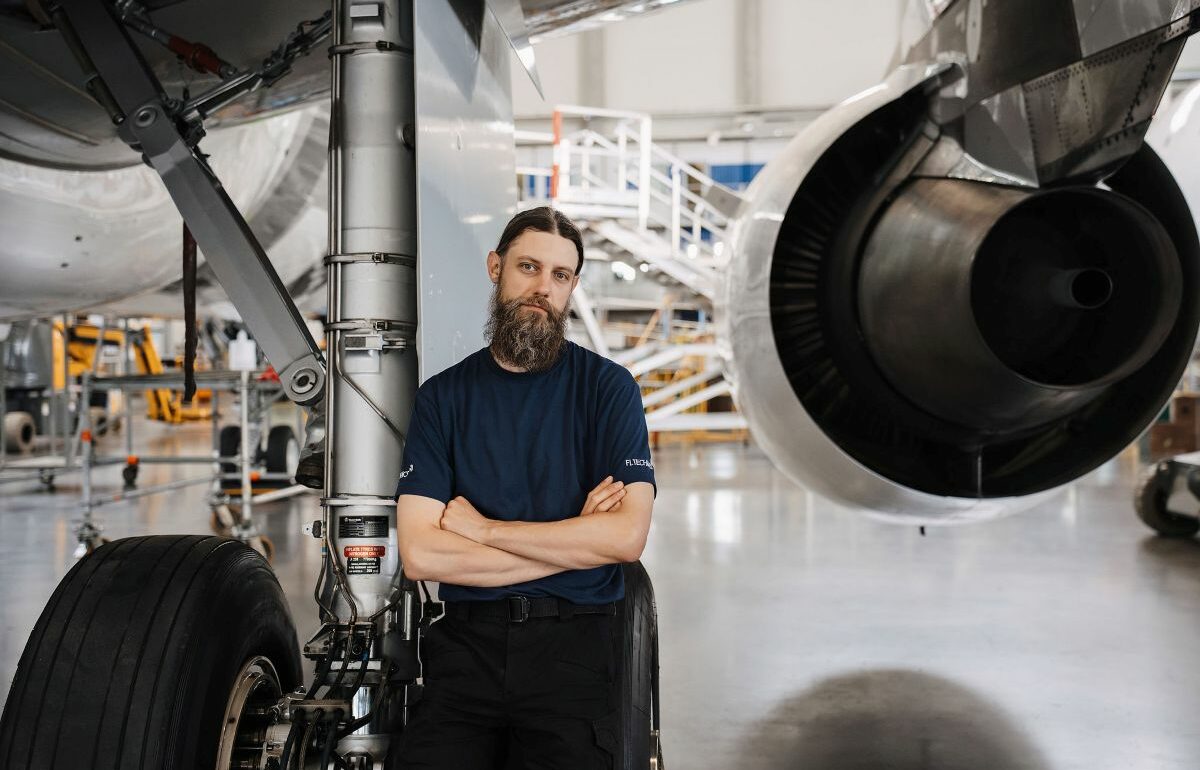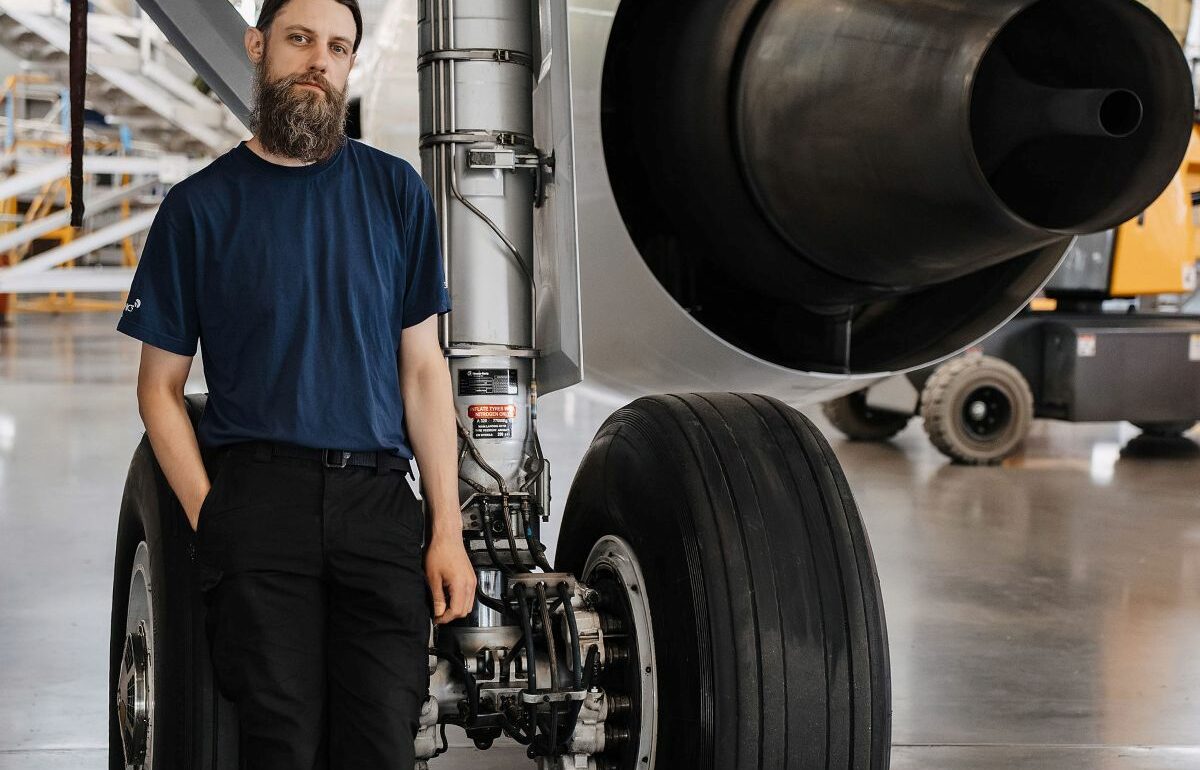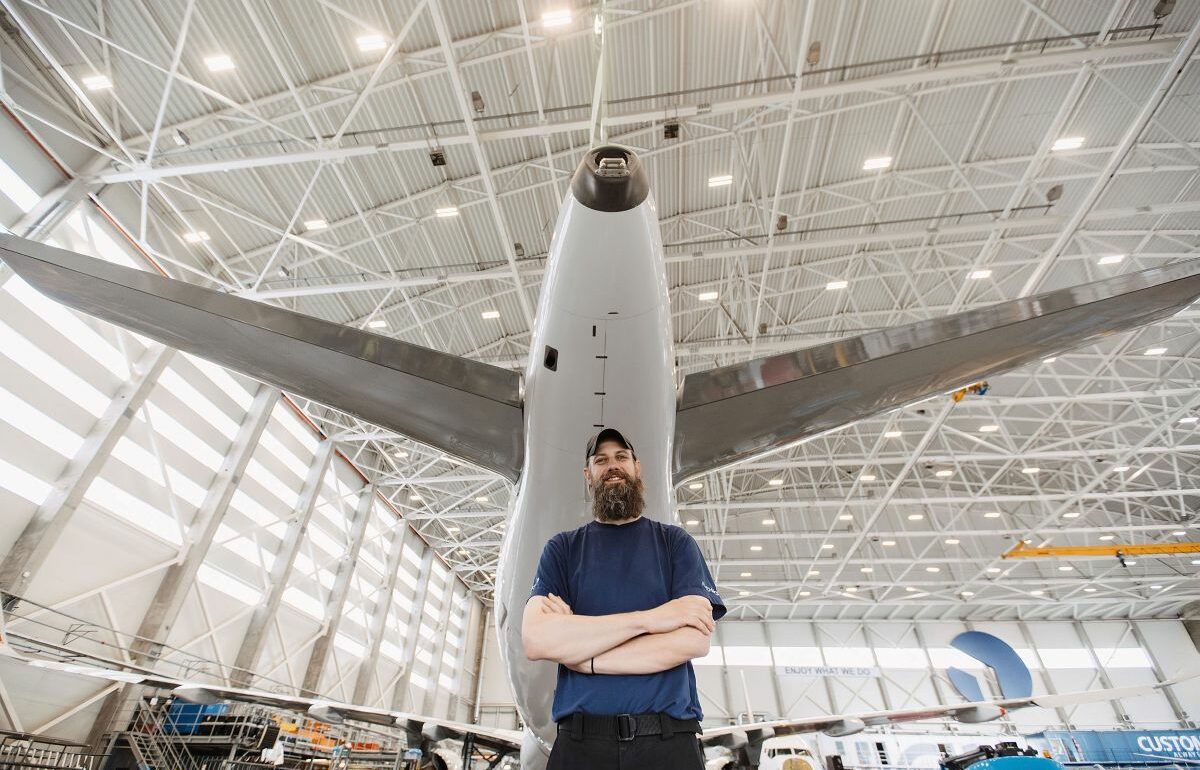Aviation is undoubtedly one of the most fascinating fields of technology. One of its less visible but crucial parts is avionics – a complex set of electronic systems that ensure aircraft can not only fly safely but also communicate, navigate, automate actions, and respond to a changing environment. In other words, avionics are both the nervous system and the brain of an aircraft. Today we’re speaking with Karolis Grigėnas, Avionics Team Leader at the aircraft maintenance hangar of the international aviation organization FL Technics. He shares what this profession looks like from the inside, how it differs from the work of a mechanic, whether it’s possible to completely disconnect from system analysis during holidays, and of course, whether he still watches every blinking indicator while flying.
If you had to explain to a child what avionics is, how would you describe what you do?
The simplest explanation would be that I repair airplanes and check electronics, wires, and sensors. In broader terms, my main job is to ensure that the aircraft’s electronic components function properly – to test them, perform system updates, modify or replace them. Sometimes an aircraft arrives for scheduled maintenance with a defect already identified, and sometimes an issue appears right before the end of maintenance. Then we must react quickly, pinpoint the cause, and find a solution. In aviation, time is critical, so even on the ground we simulate flights and malfunctions to verify that systems respond correctly in every situation.
How did your journey into avionics begin? Was there a defining moment when you realized you wanted to work with the “brain” of airplanes?
My path began back in school – I was always interested in technology and liked building things, so I couldn’t imagine myself sitting in an office all day. I wanted a job where the results were tangible. When choosing my studies, I found that Vilnius Gediminas Technical University offered a degree in Aviation Electronics Engineering. I remember being instantly intrigued – it sounded complex and “cool.” During my studies, I learned the basics of electronics and aviation. Seeing how many invisible processes happen inside tiny components drew me in even more. In my third year, during an internship at FL Technics, I saw real aircraft and engineers at work – how they solved different challenges. I felt the dynamic nature of the aviation world and realized I had chosen the right field for myself.
From the outside, technical work on aircraft may look the same – everyone inspects, repairs, and ensures safety. But the roles of avionics and mechanics differ quite a lot. How would you describe their main differences in daily practice?
Yes, everyone inspects, repairs, and ensures safety, but each specialist has very specific tasks. Avionics technicians focus mainly on electronic and electrical components – the connections between them, navigation and flight control instruments, communication systems, lighting, and similar equipment. Mechanics, on the other hand, work more with mechanical components such as landing gear, engines, the aircraft’s body, and control surfaces. Despite these differences, we all work closely together – collaboration is essential for ensuring the aircraft operates smoothly and safely.
Which aspects of avionics fascinate you the most?
I’m still amazed – and fascinated – by the precision of aircraft systems. Every wire, relay, and computer has its own unique marking and location inside the plane, and you can easily find any of the hundreds of wires using special maintenance manuals. The systems are routed so precisely that they don’t interfere with each other’s operation – for example, power cables are separated from signal cables so that electrical “noise” doesn’t disrupt sensitive systems. And, of course, the aircraft’s computers – its brains – are truly impressive. It seems as though every possible in-flight scenario has already been anticipated, with a solution ready.
The two largest aircraft manufacturers, Boeing and Airbus, are both well represented in FL Technics hangars. Are their avionics systems very different? Which do you enjoy working on more?
The avionics, their components, and core system functions are quite similar between Boeing and Airbus aircraft, but they differ in design philosophy and implementation. For example, the Boeing models we service use more analog instruments and are less automated. Sometimes, to test a sensor, we need to physically turn, tilt, or heat something to get a result. Airbus aircraft, on the other hand, are fully automated – the same systems can be checked through the aircraft’s built-in diagnostic software. Another difference is that the Boeing 737 has a traditional cockpit with control yokes, allowing more manual control, while the Airbus A320 uses side-sticks operated through computers without a direct mechanical link. Despite these differences, both aircraft are equally safe – flight is always managed by multiple control computers. Personally, I enjoy testing the Boeing 737 more – even though it often takes longer, requires more preparation, and involves a team, it makes the job more interesting.
What’s the strangest malfunction or situation you’ve had to solve in your career?
It’s hard to pick just one – there have been many unusual cases. I’d say the most remarkable ones are the first-time tasks, when I can’t consult anyone else. One such case was configuring and calibrating a satellite communication system after upgrading it and replacing the main high-powered antenna. Since activation couldn’t be done inside the hangar due to metal structures and high-frequency radiation, we had to tow the aircraft out onto the apron, activate the system, and – using special equipment and computers – rotate the aircraft to determine its exact position relative to the satellites. This could only be done four times a day for 15 minutes each. It was a fascinating experience – I didn’t know what to expect, but by following the manufacturer’s instructions precisely, everything went perfectly. The system was successfully tested and calibrated, ensuring high-speed internet, live streaming, video conferencing, and data management during flight.
A question many people want to ask but rarely do: how does the autopilot actually work? Can it land a plane without human help?
Today, every commercial aircraft flies using autopilot, and yes – it can land automatically. However, it requires several components: the autopilot’s flight control computers regulate altitude, speed, engage desired modes, and display information on flight control screens. They also calculate and control engine power and control surfaces, sending commands to other computers. Still, all this automation follows pilot-programmed inputs. Full autopilot landing is possible only at airports equipped with the right systems and under constant pilot supervision during landing.
Avionics are often associated with safety, but they also include systems like cabin lighting. Have you ever had a case where your work affected how the plane looked inside? Do airlines care about design and aesthetics? Have you noticed cultural differences between airlines?
Airlines definitely care about aesthetics and cabin appearance – it’s one of their main ways to represent their brand. There are certain manufacturer standards (for example, lighting must work properly), and regional or airline-specific ones. In my experience, some airlines don’t allow changing the shade or color temperature of the main cabin lights – if they’re bright and cool-toned, replacements must be the same. Others are less strict about that. Of course, cabin lighting choices aren’t up to me – those are customer-defined modification requests. I’ve also noticed that some airlines, especially from the Middle East, decorate cabins with national symbols or ornaments, custom carpets, or even religious elements. Others simply focus on maintaining a spotless, standard interior. Whatever the case, my main concern is that everything functions as the manufacturer intended – for example, emergency lighting must always meet strict standards.
When you fly as a passenger, can you relax and enjoy the flight? Or does your professional eye always travel with you?
I definitely can relax and enjoy flying – at that moment, I’m just a regular passenger (smiles). Of course, my professional eye never fully switches off – mostly out of curiosity. I naturally notice other airlines’ aircraft, components, and how they’re installed. I don’t do it intentionally – my trained eye just catches everything. After all, I know every sound, signal, and phase of flight by heart.
If you could give yourself advice on your very first workday, what would it be?
Don’t stop. It won’t always be easy, but it will always be fascinating!
